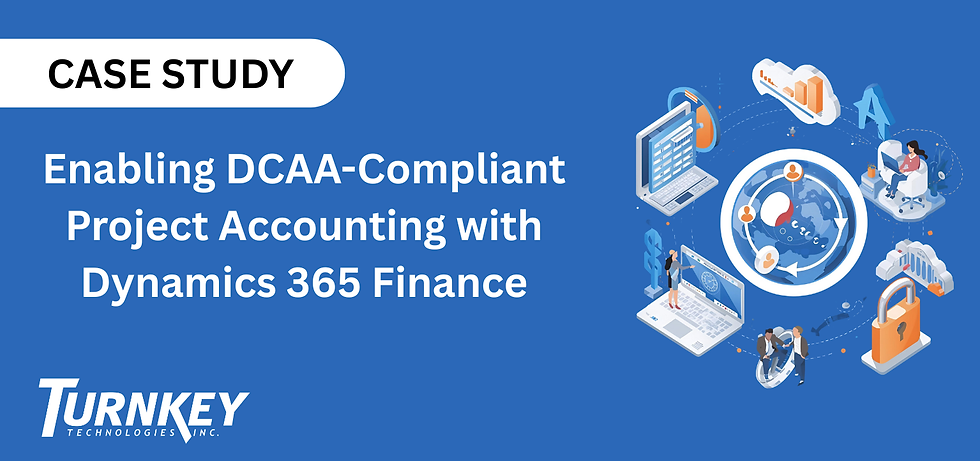Case Study: Partner Portal for National Leader in Medical Industry Recruitment
- Matt Pearson

- Jul 7, 2023
- 3 min read
Updated: Jul 16, 2025

Technology Used:
Microsoft Dynamics 365 and Power Apps Portal Framework
Project Background and Description for National Leader in Medical Industry Recruitment
After designing and building a unique CRM implementation to manage end-to-end recruitment services from outbound solicitation to lead to vetting to contracting to onboarding. Our team was asked to advise the Medical Industry Recruitment client on portal strategy and how portal functionality can be used to improve the way they serve and connect with their clients, who are clinicians from around the US.
Our goal was to help form a portal strategy for recruitment, contract management, and support. But our client had a unique aspect of their model: they were a services intermediary, not just a recruiter. Medical resources were assigned to projects and paid by the client. Providers needed a way to see their payment statements without paper or offline emailed documents.
Our payment portal design was the entry point needed to begin the full portal strategy. A derivative of the initiative was to achieve better self-administration of contact, account and address information, document management and relationship status.
We selected Microsoft Dynamics 365 with the Power Apps Portal framework, which makes services available on a consumption bases vs. a fixed license fee for each user.
We designed a portal with pages to match the needs for an entry level self-service habitat, fully branded to their requirements, and specifically tuned in the first phase for payment/statement processing.
Beyond the technical deployment, we assisted with content, UI/UX, messaging for invitations, security, and onboarding.
Operational Factors
We assigned a PM and a full delivery team. Our practice director had the most experience with portals in the healthcare space and acted as solution architect.
The solution design was based on a set of requirements we elicited using our solution delivery lead who acted in a techno-functional capacity.
From an accepted design by the architect, we estimated the budget for execution and with approval assigned an execution team to include: a solution lead, a portal configuration specialist/developer, and a portal designer.
Of course, we have separate QA resources, and our solution lead managed the user acceptance process.
After design acceptance, the work was done in three 3-week Agile sprints, and there was some additional pre-launch knowledge transfer and design tweaking that extended to the project.
We helped them invite the user community into the portal and built a simple dashboard to demonstrate adoption and show utilization.
Challenges to Overcome
Our CRM team had already crafted novel functionality to process payments, approve the payment cycles and integrate with ERP—the Microsoft Dynamics CRM base application.
Our data and processes ensured pre-validated information for incoming payment transactions. Once this was accomplished, our goal was to ensure conversion to the portal was smooth and reliable.
Once the client migrated to the portal for publishing statements, there was no going back. But their processing cycles were infrequent.
So, we had to match timing and the portal could only follow the completion of the payment processing customization in CRM. Assuring quality, mapping to the full processing functionality, and handling the communications to onboard existing clients was a more time-intensive effort than expected.
What we would do differently? As is often the case, paying attention to the intangibles including the non-technical aspects of the project was necessary.
We would have spent a little more emphasis on the communications aspect of onboarding and training portal/recruiting resources in the process of launching and managing the expectations of their clientele.
Outcome
The project was a smashing success and set the stage for a portal strategy to drive better operational efficiencies, improved support, and better communications between the recruiting agency and the provider network.
Now the phase-1 portal can be used as a beachhead for using the portal for the full recruitment request-response processes, including onboarding.
Business Benefits:
Better Operational Efficiencies, Improved Support, Better Communications
____
About Turnkey
Since 1994, Turnkey Technologies has delivered real business process modernization, improvement, and Return on Investment (ROI) to hundreds of businesses from Small-Medium (SMB) to Enterprise.
Our experienced team brings deep technical and functional expertise across numerous industries with an emphasis on Defense Manufacturing, Medical Device Manufacturing, Project Services, and more. Valet service and an extraordinary customer experience are the hallmarks of our mission, and we stand ready to deliver the real improvements that our customers need to compete in the 21st century.





